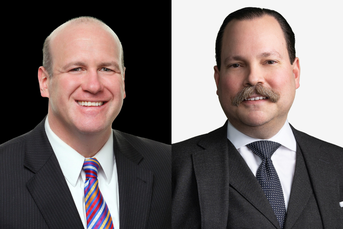Report paints picture of ‘typical’ investment adviser
The number of investment advisers registered with the Securities and Exchange Commission has declined over the past year,…
The number of investment advisers registered with the Securities and Exchange Commission has declined over the past year, while the assets under management that the SEC regulates have increased substantially, according to a new study.
The study also offers some insights into the “typical” adviser monitored by the SEC.
The number of SEC-registered advisers dropped to 10,511 in July, from 11,539 a year earlier, according to a report by the Investment Adviser Association and National Regulatory Services Inc.
So-called regulatory assets under management jumped to $49.4 trillion, from $43.8 trillion.
The changing numbers can be attributed to the Dodd-Frank financial reform law. Under it, advisers with assets under management of less than $100 million had to move from SEC to state registration.
States previously had overseen advisers with assets under management of up to $25 million. About 2,400 SEC-registered advisers have made the switch.
Although the SEC jettisoned the midsize advisers, the Dodd-Frank law required hedge funds and private-equity funds to register with the commission. Over the past year, about 1,500 private funds have been added to the SEC’s rolls.
The goal was to give the SEC better insight into the funds to help monitor potential systemic risk they pose to the markets.
The rise in assets under management stems in part from the addition of the complex private funds.
The IAA/NRS study, Evolution/ Revolution, cautions that the SEC is using a new methodology to compute what it now calls “regulatory assets under management,” making a direct assets under management comparison between 2011 and this year somewhat skewed.
Nonetheless, the change in the SEC focus to larger advisers has changed adviser oversight.
REGULATORY SHIFT
“The Dodd-Frank Act has had a profound effect on the composition of the investment advisory profession. The law has shifted regulatory responsibility for hundreds of smaller firms to the states, while requiring larger private-fund advisers to register with the SEC,” IAA executive director David Tittsworth said in a statement.
“These seismic shifts have resulted in a net decrease in the number of SEC-registered investment advisory firms,” he said. “However, many of the core characteristics of the advisory profession remain fairly constant.”
As in past years, most of the regulatory assets under management are managed by the biggest RIAs. The 90 advisers reporting $100 billion or more in assets managed 48.9% of all RAUM, while the 664 firms with at least $10 billion in assets managed 82.7% of all RAUM, according to the report.
The number of SEC-registered advisers with less than $1 billion in RAUM dropped to 74%, from 81.2%, a decline that the report links to the movement of midsize advisers to the states.
The arrival of hundreds of private funds also boosted the percentage of SEC-registered advisers with custody of client assets, to 42.4%, from 29.8% last year.
However, the report noted, “only 1% have actual physical custody of client assets.”
Many private funds are involved in general partnerships that are designated as custodians.
HOW DO YOU STACK UP?
The typical adviser, according to the report, has $270.1 million in assets under management, eight employees, between 26 and 100 clients, and 92 accounts. All the numbers represent the median in each category.
The report also indicates that SEC-registered advisers employ “more than 759,000 professionals and [serve] more than 23 million individual and institutional clients,” John Gebauer, NRS’ managing director, said in a statement.
“The investment advisory profession is alive and well,” he said.
The statistics were compiled from Forms ADV-Part 1 filed by advisers with the SEC as of July 16.
The report explained that the new RAUM calculation is based on gross, rather than net, assets and includes assets that were previously excluded, such as “proprietary assets, assets managed without compensation and assets of foreign clients, thereby increasing the reported amounts of assets for investment advisers.”
[email protected] Twitter: @markschoeff
Learn more about reprints and licensing for this article.








